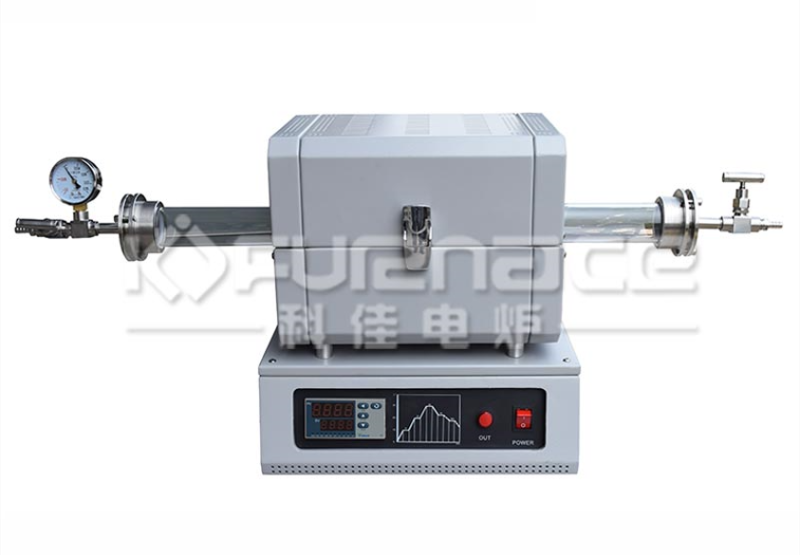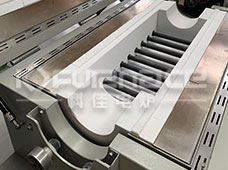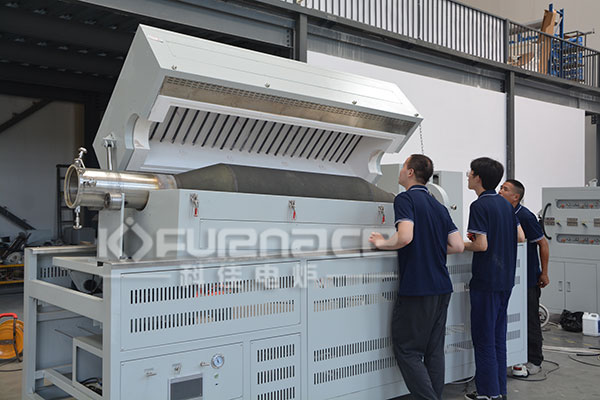During the use of a tube furnace, various faults may occur, which may involve power supply, temperature control, heating elements, indicators, and other aspects. The following are some common tube furnace failures and their possible causes:

Mini tube furnaces commonly used in laboratories can be customized and replaced for tube size, maximum heating temperature, and tube material
① No power display on the instrument: This may be due to the power not being connected, power cord failure, or internal fuse blowing. The solution includes checking if the power socket, power switch, and power cord are functioning properly, as well as replacing damaged fuses.
② The temperature inside the furnace does not rise: When the temperature inside the tube furnace cannot rise, it may be caused by damage to the heating element, malfunction of the temperature controller, or abnormal power supply. At this time, it is necessary to check whether the heating element is intact, adjust the temperature controller setting, and confirm whether the power supply voltage is stable.
③ The set temperature does not match the temperature inside the furnace: This type of fault may be caused by incorrect thermocouple wiring, sensor failure, or misalignment of the temperature control system. The solution includes checking if the thermocouple wiring is correct, replacing faulty thermocouples or sensors, and calibrating or replacing the temperature controller.
④ The instrument output is normal but the OUT indicator light does not flash: This usually means that there is a fault in the main circuit, such as a damaged thyristor, faulty indicator light, or a broken heating resistor wire. It is necessary to inspect and replace the corresponding components.
⑤ Temperature instability or inability to reach the set temperature: This may be due to issues with the temperature control system or heating elements. It is necessary to inspect and adjust the temperature control system, as well as replace damaged heating elements.
⑥ Shell heating or abnormal noise: The cooling system or fan may have problems, resulting in ineffective heat dissipation. The cooling system and fan should be checked for proper operation.
⑦ Abnormal odor or smoke: This may be due to material combustion or other component malfunctions. Immediate cessation of use and inspection of the furnace for foreign objects or damaged components.
⑧ Abnormal display or operation failure of the control panel: The control circuit or panel may be damaged. The control circuit and panel should be checked for integrity, and if damaged, they should be replaced in a timely manner.
⑨ Gas concentration does not meet the indicated standard: If the tube furnace needs to work in a specific atmosphere, a malfunction in the atmosphere control system or gas supply issues will affect the treatment effect; Poor furnace sealing or gas leakage at pipeline connections can lead to atmosphere leakage or temperature instability during the treatment process.

When encountering problems with tube furnaces, they should be dealt with in a timely manner
In addition to the common faults mentioned above, attention should also be paid to the following points to avoid the occurrence of faults:
Ensure that the furnace temperature does not exceed the rated temperature to avoid damaging the heating elements and furnace lining.
It is prohibited to directly inject various liquids and dissolve metals into the furnace to maintain cleanliness.
Regularly check whether the electrical connections of the temperature control system are in good contact and whether the connection points of the heating elements are tightened.
After using it for a period of time, if the vacuum degree decreases during vacuum pumping, the corresponding components should be inspected and replaced to improve the overall vacuum degree of the tube furnace system.

When encountering problems with tube furnaces, they should be dealt with in a timely manner
When encountering a malfunction in a tube furnace, it is recommended to first investigate the fault phenomenon and the possible causes mentioned above. If the problem cannot be solved on its own, professional maintenance personnel should be contacted for inspection and repair. At the same time, in order to ensure the normal operation of the tube furnace and extend its service life, it is recommended to conduct regular maintenance and upkeep.Click to learn more tube furnace! Or click on online customer service to learn more about product information!